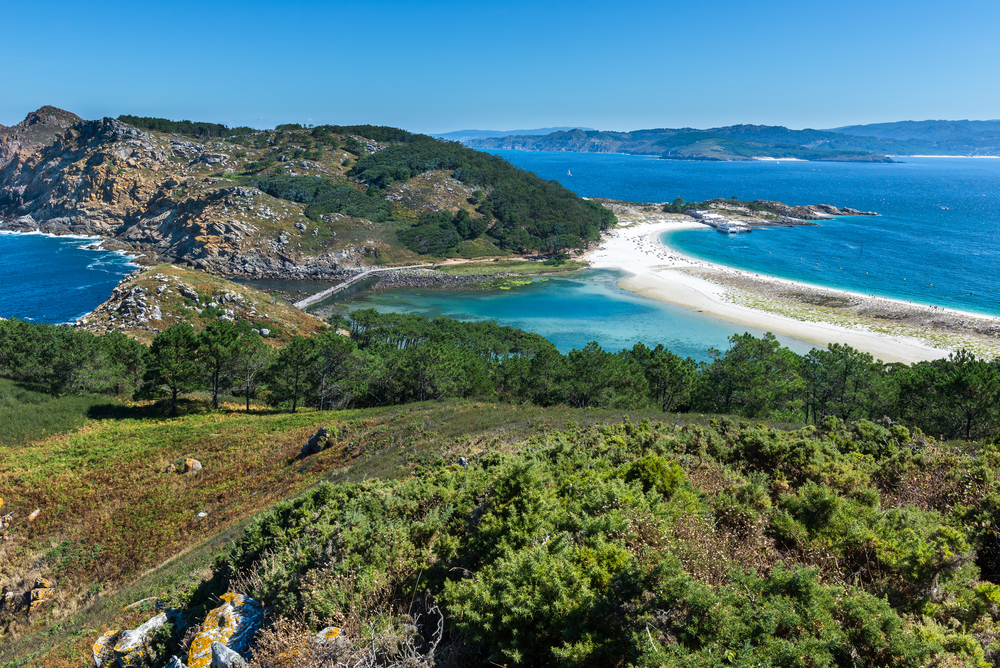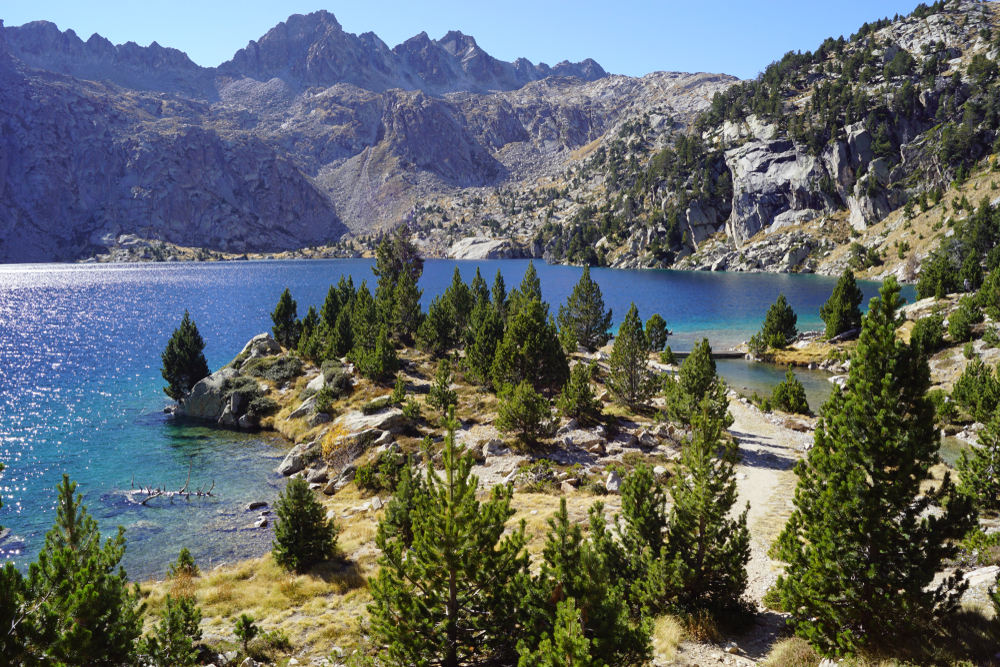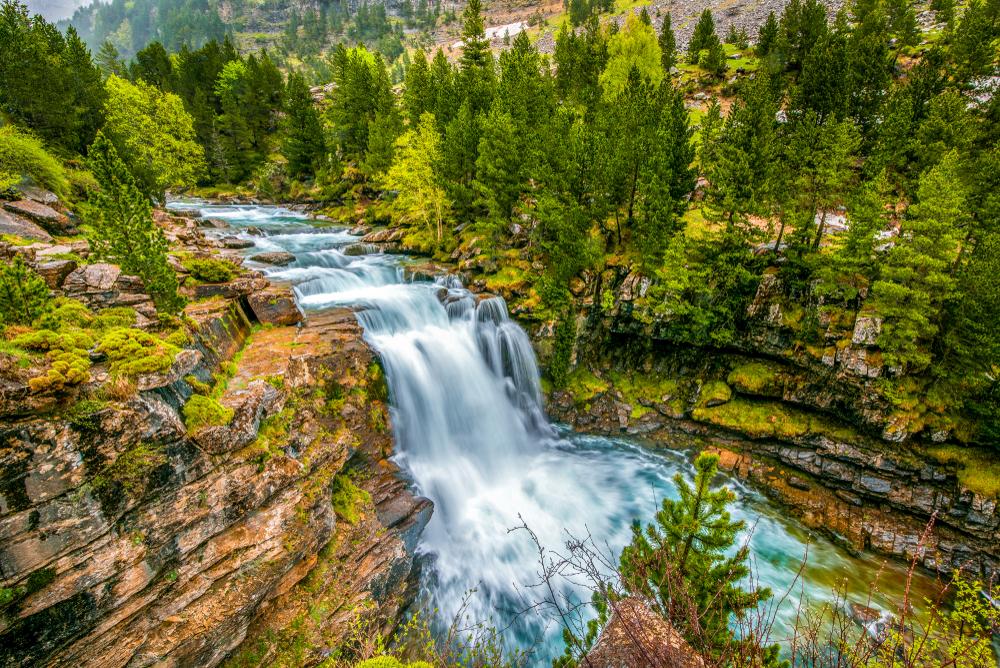Atlantic Islands of Galicia Overview
Atlantic Islands of Galicia National Park, known locally as Parque Nacional Marítimo-Terrestre das Illas Atlánticas de Galicia, is a stunning protected area located off the coast of Galicia in northwestern Spain.
Covering approximately 33.1 square miles (85.4 square kilometers), this national park consists of four main archipelagos: Cíes, Ons, Sálvora, and Cortegada, along with their surrounding marine environments. The park, established in 2002, is the only national park in Galicia and is renowned for its rich biodiversity, dramatic coastal landscapes, and pristine ecosystems that blend marine and terrestrial environments.
The park’s terrain is characterized by rugged cliffs, sandy beaches, and rocky coves shaped by the relentless forces of the Atlantic Ocean. The Cíes Islands, often referred to as the “Galician Caribbean,” are particularly famous for their white sandy beaches and crystal-clear waters, with Playa de Rodas frequently cited as one of the most beautiful beaches in the world.
The islands’ cliffs rise steeply from the sea, offering panoramic views of the Atlantic, while inland areas feature dense forests of maritime pine and eucalyptus. The Ons Archipelago, located further south, is also known for its dramatic cliffs and sea caves, including the famous Buraco do Inferno, a striking chasm where the waves crash with immense force. The smaller islands of Sálvora and Cortegada contribute additional diversity, with unique geological formations, extensive tidal flats, and some of the oldest laurel forests in Europe.
The national park supports a diverse range of wildlife, particularly seabirds and marine life. It is an essential breeding ground for several bird species, including the European shag, yellow-legged gull, and one of the largest colonies of Cory’s shearwaters in Spain.
The waters around the islands are home to an impressive variety of marine species, including dolphins, common octopuses, and an abundance of fish. The rich underwater ecosystem features kelp forests, coral formations, and seagrass meadows that provide habitat for countless invertebrates and small marine creatures. On land, visitors may encounter rabbits, wild goats, and a variety of reptiles and amphibians that thrive in the island’s diverse habitats.
One of the most popular attractions in the park is hiking to the Monte Faro viewpoint on the Cíes Islands, offering breathtaking panoramic views of the ocean and surrounding islands. The pristine beaches, such as Playa de Rodas and Playa de Figueiras, attract visitors looking to relax or enjoy the clear waters.
The park is also a paradise for snorkeling and diving enthusiasts, who can explore the rich underwater landscapes teeming with marine life. Boat tours from Vigo, Baiona, and other coastal towns provide access to the islands, and kayaking along the coastline is another popular way to experience the natural beauty of the area.
Conservation efforts in the Atlantic Islands of Galicia National Park focus on preserving its fragile marine and terrestrial ecosystems. Strict visitor limits are enforced, particularly during the summer, to minimize human impact on the islands. Efforts to remove invasive eucalyptus trees and restore native laurel and oak forests have been ongoing, contributing to the preservation of the islands’ biodiversity.
Marine conservation measures also include monitoring fish populations and protecting sensitive underwater habitats from pollution and overfishing. While challenges such as climate change, invasive species, and illegal fishing persist, the park has made significant strides in environmental protection and sustainable tourism management. Its inclusion in the Natura 2000 network and designation as a Special Protection Area for Birds further highlight its importance as a critical ecological sanctuary.












































































